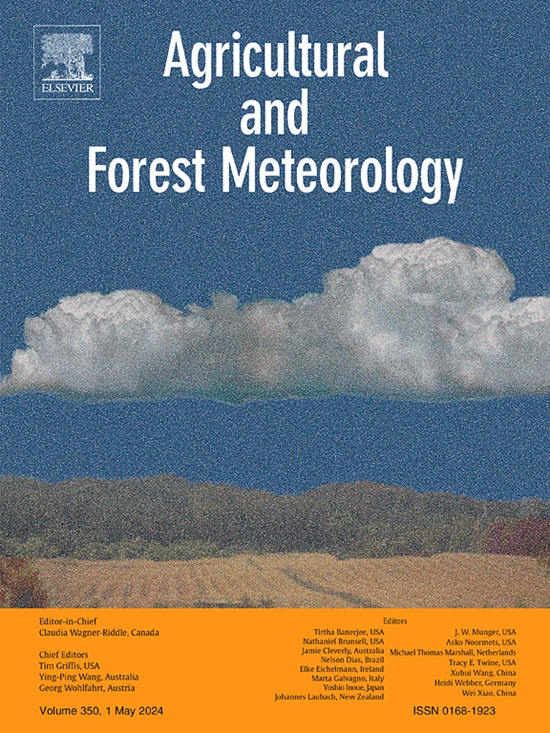Predicting fire risk in colombia tropical savannas: A multi-scenario approach
IF 5.6
1区 农林科学
Q1 AGRONOMY
引用次数: 0
Abstract
Climate change amplifies the frequency and severity of fires in tropical regions, particularly in savanna ecosystems. Amidst these changes, we provide the first comprehensive analysis of future fire risks in northern South American tropical savanna ecosystems under diverse climate scenarios. Utilizing a compounded-event framework, we not only assess but also predict fire risks in savannas under varying carbon mitigation scenarios (SSP 1–2.6, 3–7.0, 5–8.5). Our approach integrated the individual and compounded effects of eight key climatic variables to unveil the intricate dynamics of heat and drought on fire risk. A Poisson bivariate model focused on maximum temperature and accumulated precipitation robustly explained 75 % of the monthly burned area variability. We used this model to forecast fire risks from 1980 to 2100, revealing a concerning 5–8 % increase in risk during 2000–2020, with projections showing a potential 40 % surge under low mitigation scenarios. This underscores the critical need for aggressive carbon emission mitigation and effective localized fire management strategies, highlighting their vital role, even in optimistic climate scenarios.
预测哥伦比亚热带稀树草原的火灾风险:一种多情景方法
气候变化加剧了热带地区,特别是稀树草原生态系统发生火灾的频率和严重程度。在这些变化中,我们首次全面分析了南美北部热带稀树草原生态系统在不同气候情景下的未来火灾风险。利用复合事件框架,我们不仅评估而且预测了不同碳缓解情景(SSP 1-2.6、3-7.0、5-8.5)下稀树草原的火灾风险。我们的方法综合了八个关键气候变量的单独和复合影响,揭示了炎热和干旱对火灾风险的复杂动态。一个以最高温度和累积降水为中心的泊松双变量模型可靠地解释了75%的月燃烧面积变化。我们使用该模型预测了1980年至2100年的火灾风险,显示2000年至2020年期间风险增加了约5 - 8%,预测显示在低缓解情景下可能增加40%。这突出了积极减少碳排放和有效的局部火灾管理战略的迫切需要,突出了它们的关键作用,即使在乐观的气候情景下也是如此。
本文章由计算机程序翻译,如有差异,请以英文原文为准。
求助全文
约1分钟内获得全文
求助全文
来源期刊
CiteScore
10.30
自引率
9.70%
发文量
415
审稿时长
69 days
期刊介绍:
Agricultural and Forest Meteorology is an international journal for the publication of original articles and reviews on the inter-relationship between meteorology, agriculture, forestry, and natural ecosystems. Emphasis is on basic and applied scientific research relevant to practical problems in the field of plant and soil sciences, ecology and biogeochemistry as affected by weather as well as climate variability and change. Theoretical models should be tested against experimental data. Articles must appeal to an international audience. Special issues devoted to single topics are also published.
Typical topics include canopy micrometeorology (e.g. canopy radiation transfer, turbulence near the ground, evapotranspiration, energy balance, fluxes of trace gases), micrometeorological instrumentation (e.g., sensors for trace gases, flux measurement instruments, radiation measurement techniques), aerobiology (e.g. the dispersion of pollen, spores, insects and pesticides), biometeorology (e.g. the effect of weather and climate on plant distribution, crop yield, water-use efficiency, and plant phenology), forest-fire/weather interactions, and feedbacks from vegetation to weather and the climate system.

 求助内容:
求助内容: 应助结果提醒方式:
应助结果提醒方式:


